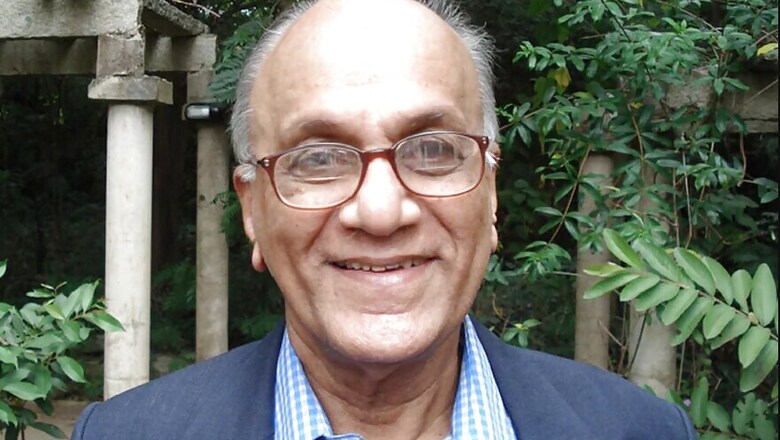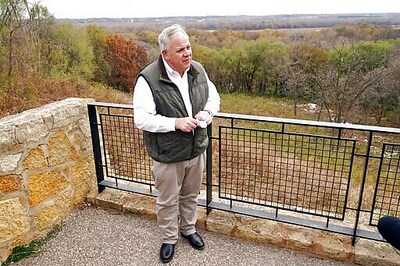
views
Professor CS Seshadri had a poor memory for names and slid into the “absent-minded professor" stereotype but the mathematician deliberately maintained the image to blunt the edges of a personality marked by a razor-sharp intellect that grew more and more focused as he aged, say friends and colleagues. Professor Seshadri died in Chennai on Friday at the age of 88.
He was the founder-director of the Chennai Mathematical Institute. He spent a little over the last three decades building the institute as a rare haven for research and academia, after his time at TIFR-Mumbai.
He recorded numerous achievements in the field of algebraic geometry, and among many others, were fundamental contributions like the Narasimhan-Seshadri theorem, a 55-year-old breakthrough that has changed linkages and perceptions in spheres as far theoretical physics.
Professor Seshadri’s impressive body of work sat very lightly on him. Rather, he chose to underplay it, couching his intellectual prowess among other interests -- his passion for mathematics was perhaps equalled only by his love for Carnatic music.
He hailed from a Kanchipuram family that had a line of musicians on his maternal side, and some from his father’s side as well.
The professor, however, had no airs about him. Most of the time, his energies were focussed on expanding the institute into new branches and building capacities in different fields.
“Four or five years ago, when he wanted to plan the future of the institute, he assembled the best brains of the world. He brought Dr MS Narasimhan and Dr Srinivasa Varadhan (NYU Courant), and several others…” said software exporter Cognizant’s co-founder Lakshmi Narayanan, who had known Seshadri well.
“One of his special relationships was the one he shared with Fields Medal winner Manjul Bhargava. Whenever Manjul was in town, he made it a point to visit Seshadri…”
According to Professor Madhavan Mukund, Deputy Director and Dean of Studies at the Chennai Mathematical Institute, Seshadri’s genius lay in the engaging with, arguably, one of the most complex branches of mathematics in a holistic manner:
“As the name suggests, algebraic geometry is a way of understanding geometric concepts through algebra. At school level, we learn how algebraic equations can represent geometric shapes such as lines, parabolas and circles. Algebraic geometry carries this correspondence to a very abstract level, where the geometric objects are hard to visualise and the corresponding algebraic manipulations are equally complex…” said Prof Mukund.
The achievements of Professor Seshadri, which has won him international recognition, are coming into sharp relevance with the connection algebraic geometry has been found to have with the P-vs-NP problem, a famously unsolved problem sitting at the junction of computer science, mathematics, AI and several other fields.
“Recently, algebraic geometry has also been connected to the central problem P-vs-NP in computer science, which tries to understand whether some computational problems are intrinsically more complex than others,” said Prof. Mukund.
Compared to his peers, Seshadri looked at mathematics with a wide-eyed curiosity.
“He had a very broad view of mathematics, unlike many of his contemporaries. He was among the first senior mathematicians in India, for instance, to recognise the strong mathematical foundations that underlie computer science. In recent years, he was excited about the interplay between mathematics and areas like biology and economics,” said Prof. Mukund.
CMI was the first academic institution in India to actively involve top-level research mathematicians in undergraduate teaching. Over the past two decades, CMI graduates have established themselves as accomplished researchers in their own right.
They have taken up positions as faculty members in leading academic institutions across India as well as the rest of the world.
In his own way, Seshadri had developed the eccentricities of a mathematician that included an undying thirst to teach. Any opportunity to get some knowledge imparted, he would take it.
At a CMI convocation, when Infosys founder Narayana Murthy was speaking, largely on human values, Seshadri walked up to Murthy and said (into the microphone), “Can you talk about all that you have done and the opportunities in quantum computing?”
Talking about the incident, Narayanan said, “When an idea strikes him (Seshadri), he forgets himself.”
His characteristic abruptness, sometimes, had its immediate benefits. One day, Seshadri had asked Narayanan why the latter was living in such a largish independent house. Even as Narayanan was framing a response, “Would you be okay if I conducted my classes here?”
“Be my guest…” said Narayanan.




















Comments
0 comment